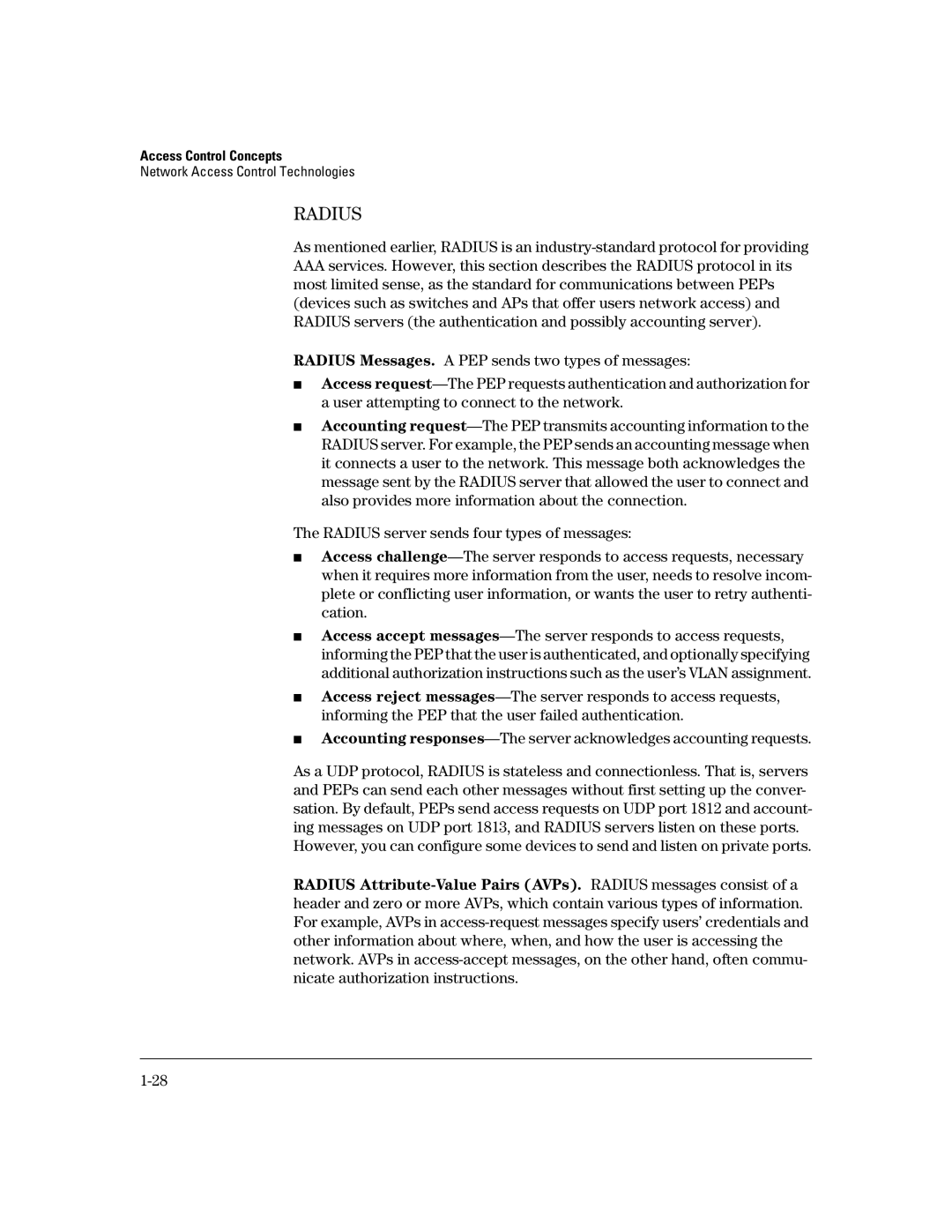Access Control Concepts
Network Access Control Technologies
RADIUS
As mentioned earlier, RADIUS is an
AAAservices. However, this section describes the RADIUS protocol in its most limited sense, as the standard for communications between PEPs (devices such as switches and APs that offer users network access) and RADIUS servers (the authentication and possibly accounting server).
RADIUS Messages. A PEP sends two types of messages:
■Access
■Accounting
The RADIUS server sends four types of messages:
■Access
■Access accept
■Access reject
■Accounting
As a UDP protocol, RADIUS is stateless and connectionless. That is, servers and PEPs can send each other messages without first setting up the conver- sation. By default, PEPs send access requests on UDP port 1812 and account- ing messages on UDP port 1813, and RADIUS servers listen on these ports.
However, you can configure some devices to send and listen on private ports.
RADIUS
